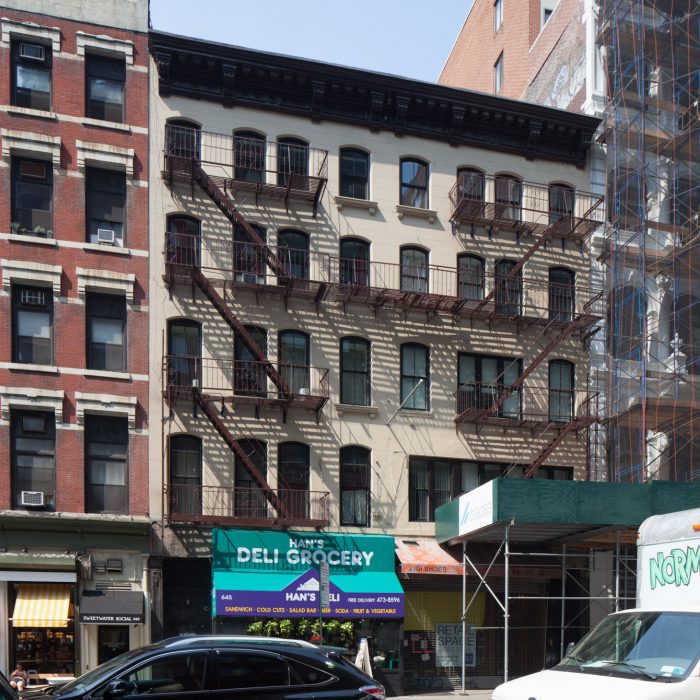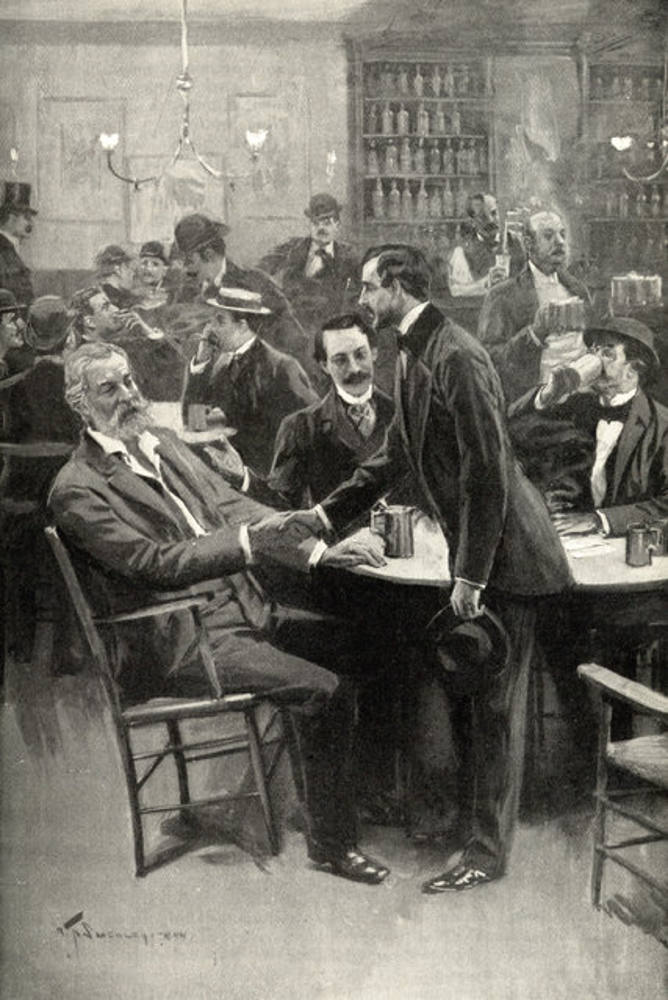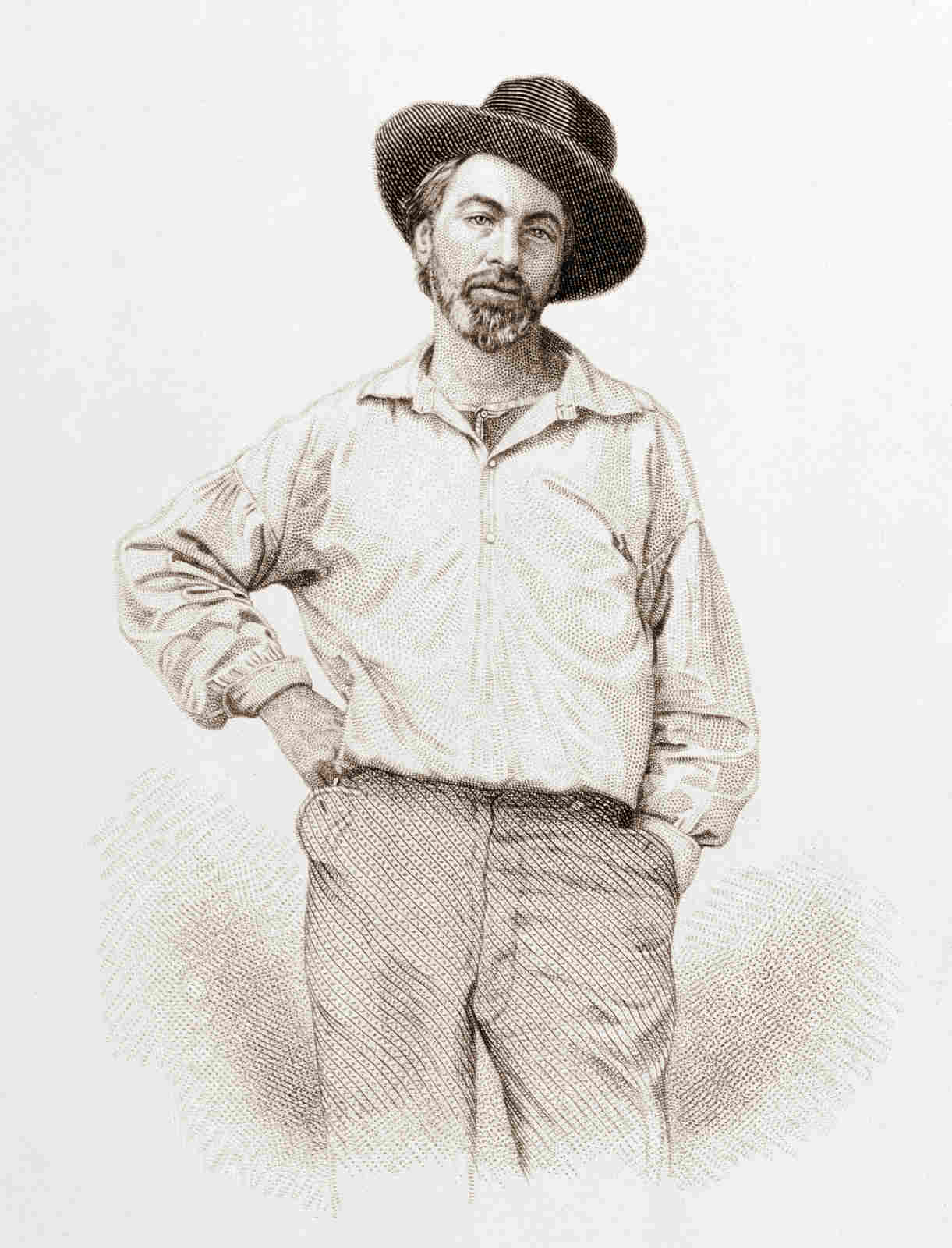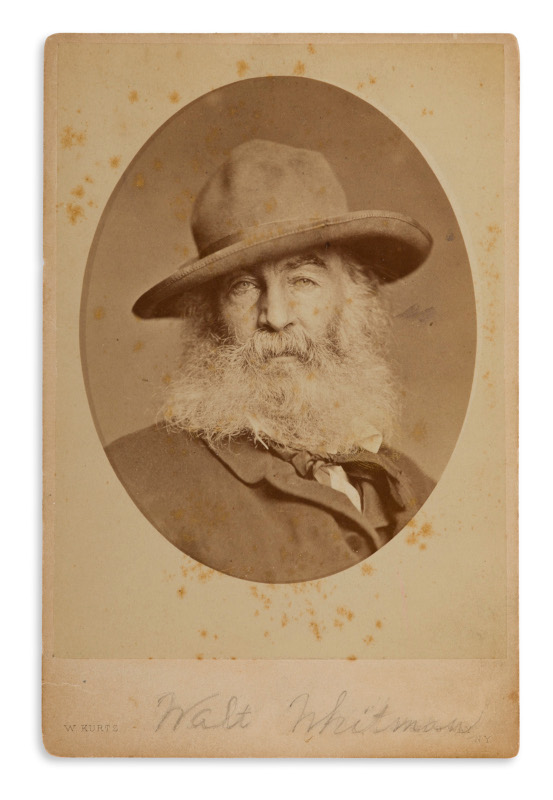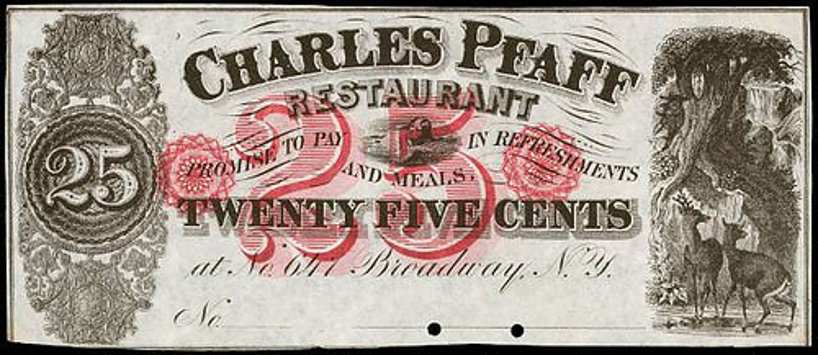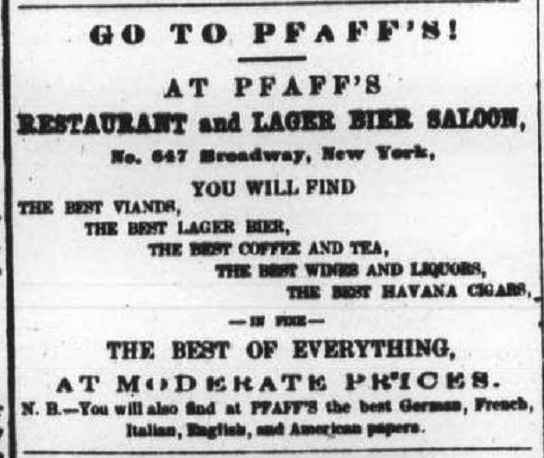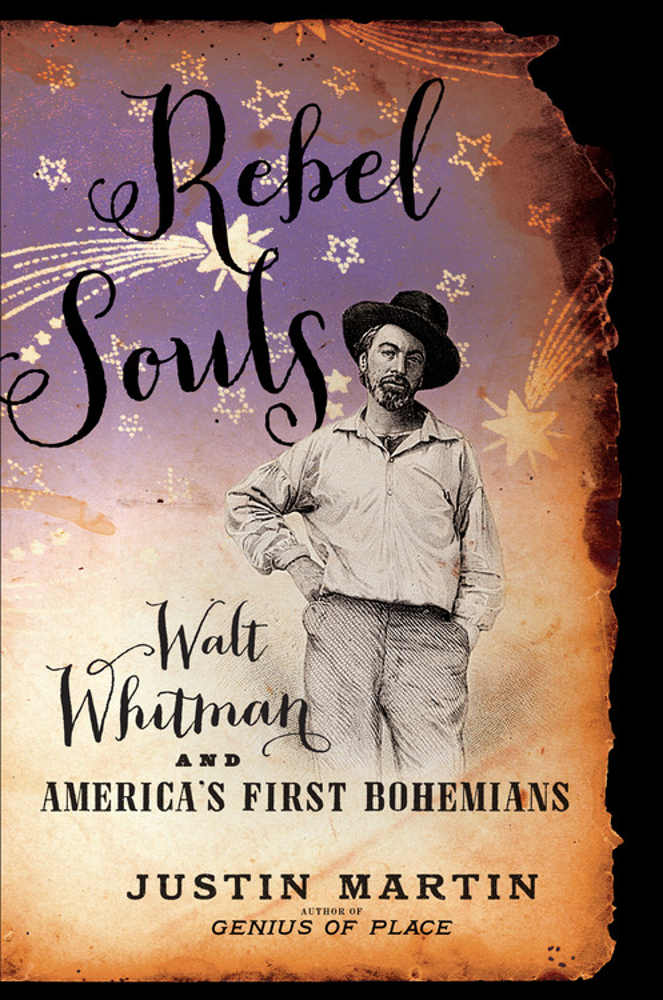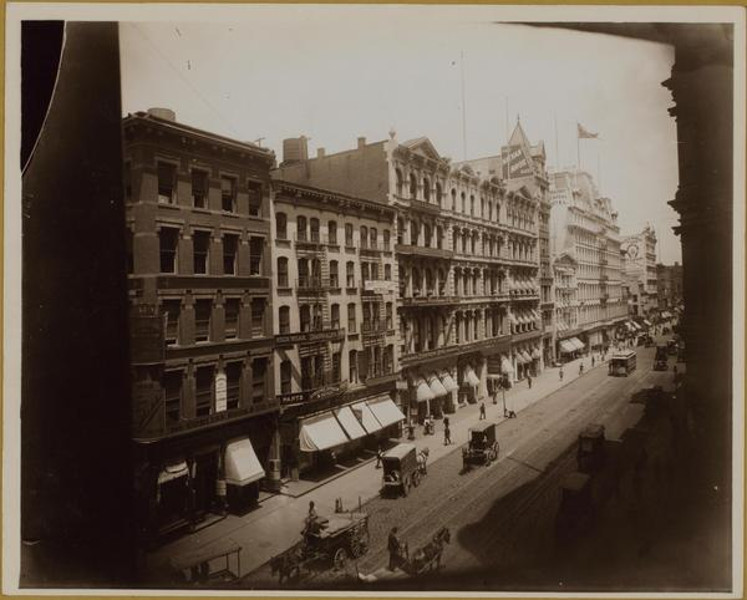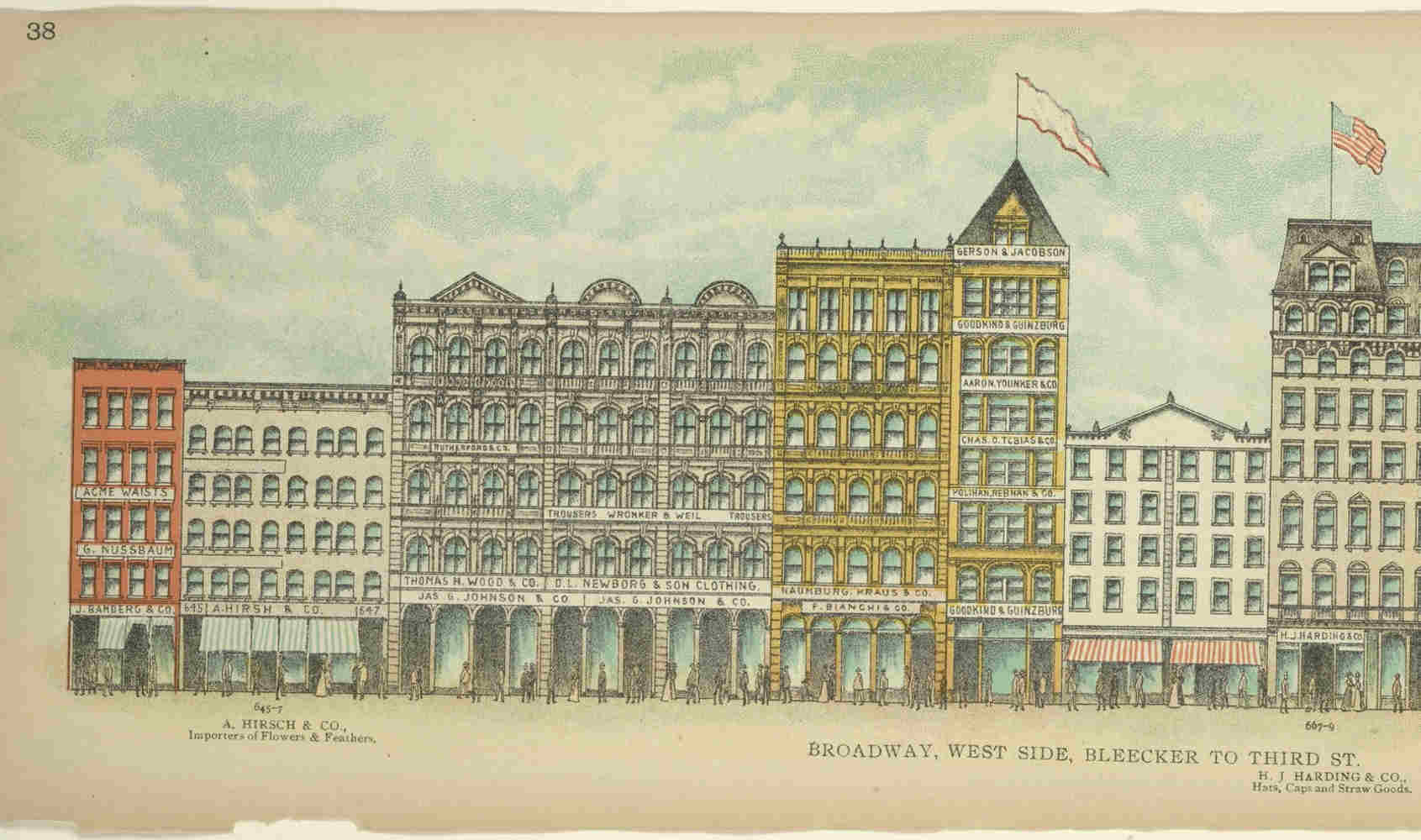overview
Pfaff’s was a Rathskeller-like beer and wine cellar restaurant in the Coleman House Hotel that was a favorite haunt of the Bohemians of the 1850s, including poet Walt Whitman.
Operating here from 1859 to 1864, Pfaff’s also became known as a place for men looking to meet other men.
See the entry for the David Mancuso Residence / The Loft for more information about this site’s LGBT history.
History
One of the earliest known spaces in New York that would now be regarded as LGBT-related was Pfaff’s, operated from 1859 to 1864 by German-born proprietor Charles Ignatius Pfaff. It was a Rathskeller-like beer and wine cellar restaurant in the Coleman House Hotel, extending into the sidewalk vaults (basement area below the sidewalk), that became a favorite haunt of the Bohemians of the 1850s, including artists, writers, and actors.
Walt Whitman, a journalist for some 15 years in Brooklyn and Manhattan, was a central figure here from 1859 to 1862.
[The] vault at Pfaff’s where the drinkers and laughers meet to eat and drink and carouse, while on the walk immediately overhead pass the myriad feet of Broadway…
At the time, Whitman was living with his young lover Fred Vaughn in Brooklyn, and they could often be seen together at the same table at Pfaff’s. Whitman had begun writing poetry, which he first collected into Leaves of Grass in 1855. His sensual poetry was considered by many at the time to be controversial and “offensive.” Around 1859, Whitman wrote twelve famously homoerotic “Calamus” poems, celebrating the manly love of comrades, that were included in the 1860 edition of Leaves and made Whitman iconic in the United States and Europe as one of the first people to openly express the concept of men loving men.
Biographers Ed Folsom and Kenneth Price wrote that Whitman met Fred Gray (John Frederick Schiller Gray) in the summer of 1862 and both belonged to a group at Pfaff’s known as the “Fred Gray Association,” described as “a loose confederation of young men who seemed anxious to explore new possibilities of male-male affection.” Whitman left for Washington, D.C., later that year to attend to Civil War soldiers.
Although the underground vaulted space of Pfaff’s has been destroyed, the Coleman House Hotel, with its basement, survives.
See the entry for the David Mancuso Residence / The Loft for more information about this site’s LGBT history.
Entry by Jay Shockley, project director (March 2017).
NOTE: Names above in bold indicate LGBT people.
Building Information
- Architect or Builder: Unknown
- Year Built: 1858-59
Sources
Christopher D. Brazee, Gale Harris, and Jay Shockley, “150 Years of LGBT History,” New York City Landmarks Preservation Commission (June 2014).
Ed Folsom and Kenneth M. Price, Re-Scripting Walt Whitman: An Introduction to His Life and Work (Hoboken, NJ: Wiley-Blackwell, 2005).
Justin Martin, Rebel Souls: Walt Whitman and America’s First Bohemians (Boston: DaCapo Press, 2014).
Lehigh University, “Gray, John Frederick Schiller (1840-1891),” bit.ly/2g4AlGi.
Martin D. Hyman, “‘Where the Drinkers & Laughers Meet’ – Pfaff’s: Whitman’s Literary Lair,” Seaport (Spring 1992).
Stephanie M. Blalock, “A Recently Discovered Photograph of Fred Gray,” Walt Whitman Quarterly Review, vol. 29, no. 3 (2012).
Do you have more information about this site?
This project is enriched by your participation! Do you have your own images of this site? Or a story to share? Would you like to suggest a different historic site?
